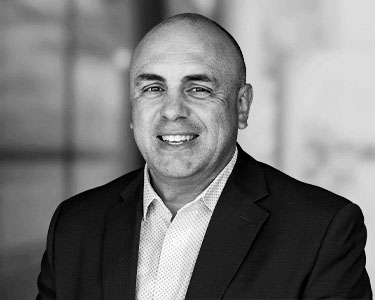Life & Air In The Post-Pandemic World
With hope on the horizon in the form of a long-awaited vaccine, it seems possible that the “new normal” is almost here. However, it is important to remember that the virus doesn’t end with the vaccine. The COVID-19 pandemic has forever changed public sentiment about the safety of indoor environments and how we approach indoor air quality control.
Even as we begin to move out of our long isolation, many changes due to the pandemic are here to stay. It seems everyone is hyper-aware of the potential spread of airborne pathogens, and especially as mask mandates are lifted, it is more important than ever to pay attention to and address the quality and safety of the air we breathe.
Why Indoor Air Quality Control Will Remain in the Forefront of Public Concern
COVID-19 has affected our society well beyond the direct impacts of the pandemic itself — it is also shaping our culture. Where we once took for granted the cleanliness of our indoor environments, we now expect to see people cleaning, distancing, and disinfecting. That sentiment is causing us to focus on how we approach indoor air quality as well.
We’re only beginning to see how new indoor cleanliness measures and pathogen control technology will change our way of life moving forward. Even as the direct threat of this virus diminishes, there are a number of reasons that improved indoor air quality control measures will remain an essential component of both commercial and residential environment safety moving forward.
Continuing Presence of COVID-19
Even with vaccine distribution underway worldwide, this won’t be the last we see of COVID-19. While we can celebrate the effectiveness of various forms of the vaccine and treatments that are working to reduce the chance of infection, minimize the risk of hospitalization and death, and even appear to limit transmission of the virus, COVID-19 has not yet been eradicated.
Experts at the World Health Organization predict COVID-19 to become endemic like other human coronaviruses and continue to crop up as new mutations and strains over time. We don’t yet know what form these future viruses may take, but they will still require diligence and protection to prevent widespread illness.
Future Health Crises
Scientists warn that the COVID-19 pandemic points to a growing likelihood of similar events in the future. As COVID-19 finds its place in history, we’re all looking for ways to return to daily life, but health experts agree that now is the time to prepare for the next global health emergency.
World Health Organization emergencies chief, Michael Ryan said at a press conference, “This pandemic has been very severe. It has spread around the world extremely quickly and it has affected every corner of this planet, but this is not necessarily the big one.”
Ryan went on to say that while the virus is “very transmissible, and it kills people … its current case fatality (rate) is reasonably low in comparison to other emerging diseases. We need to get ready for something that may even be more severe in the future.”
After experiencing the way COVID-19 hobbled our economy, social landscape, and health care system, we can use what we’ve learned to respond to and even prevent future crises.
Post-COVID-19 Regulatory Shift
At this point, it is unclear how exactly federal and state agencies will drive regulatory changes, but it is clear that changes will be made. Airports have certainly never been the same after September 11, 2001.
The risk of future pandemics is real. The New York Health and Essential Rights Act, or “NY HERO Act”, signed into law in May of 2021, requires employers to take steps to ensure worker safety from airborne pathogens, and points specifically to “engineering controls” as the best method of making their environments healthier. There are penalties for failure to comply.
New York state is taking a first step, but future regulations will likely come at the state and federal levels. OSHA is considering a workplace standard for indoor airborne pathogens and infectious diseases. But while lawmakers and health officials determine the best way to implement these standards, the general public has already demonstrated a demand for better indoor air quality.
Post-COVID-19 Cultural Shift
Distancing, disinfection, and distribution of the vaccine will create cleaner and healthier environments and will allow people to return to pre-pandemic activities, but the experience as a whole has changed the public’s perspective of the safety of indoor environments.
Today, there is heightened awareness and concern regarding the cleanliness of our public spaces. Society’s new expectation is that establishments, companies, employers, and the government are responsible for providing a clean and safe working and leisure environment.
One thing is clear: Even after the vaccinations have done their work and the world begins to reopen its doors, we likely won’t be fully back to the way things used to be. The pandemic started a cultural shift. Just as we won’t take for granted the ability to hug our family and eat at local restaurants, there will be an increased, sustained awareness of how pathogens spread through the air that necessitates improved disinfection and safety protocols, better health outcomes, and advanced pathogen control technology.
Maintaining the Momentum of Innovation and Creating Cleaner, Safer Indoor Environments As We Move Away from the Pandemic
Rather than letting the momentum of progress and change stall out, now is the time for commercial business owners in every industry — from hospitality and education to healthcare, restaurants, and more — to embrace the new technologies developed to provide greater indoor air quality control for all.
A recent article published by McKinsey & Company states, “The COVID-19 crisis reminds us how underprepared the world is to detect and respond to emerging infectious diseases. We must make smart investments now to simultaneously navigate COVID-19 and prepare for future pandemics.
The article goes on to encourage that the United States, and indeed, the world as a whole, move from a “break glass in case of emergency” response system, to preparedness and infection prevention. Indoor air quality systems that are always on and that can scale quickly will help us address future pandemics of this scale or larger.
We’ve seen firsthand how our current systems are failing. Now is the time to implement better systems. Scientists, researchers, and consumers alike are calling for change. An article by Fast Company summarized the call-to-action of more than 38 scientific researchers, saying, “Just like the government mandates clean water and food, scientists argue that well-filtered and ventilated air inside our offices and homes should be guaranteed.”
While it’s impossible to retrofit every existing building to improve ventilation, there are myriad strategies, technologies, and solutions available that can work to prevent pathogen transmission in our indoor environments. These innovations are essential in moving our world from a reactive systems approach to a preventative one.
Protecting Your Future with UV-C Light Treatment Technology
One of our most important tools against the spread of harmful airborne pathogens is UV-C technology, also known as UVGI. Originally developed for use in hospital and healthcare settings, where treating pathogens in occupied spaces actively saves lives, UV-C light technology has now become a popular, effective indoor air quality control method for use in almost any setting.
Anywhere people gather, from the office to restaurants, schools, and government facilities, can be made measurably safer by the correct and safe implementation of this trusted, well-known, and innovative technology.
Room level source-control UV-C units like UV Angel’s treat the air by passing it through a shielded chamber where bacteria, fungi, and viruses are neutralized by a high-intensity UV-C light. This presents one of the best possible methods of pathogen neutralization, in that UV-C is proven effective, it is safe for use in occupied spaces when shielded, and it does not use or create toxic chemicals. Lest we forget, pathogens in the air will settle on surfaces and be stirred up, back into the air, as people enter a room. Treating the air can interrupt this cycle.
Especially as we begin to understand the ability of viruses to mutate and adapt to become resistant to certain chemicals, UV-C presents an innovative, long-lasting method of control that other technologies cannot. Likewise, the development of bacterial resistance to antibiotics can be reduced by the use of UV-C.
This technology is proven effective with clinical research. Laboratory test results show up to 99.99% elimination rates of pathogens in the air. Unlike other indoor air purifiers and disinfection methods that may produce harmful chemicals or byproducts, shielded UV-C can be installed safely at the room level, neutralizing pathogens exactly where they pose the greatest threat for transmission.
The Business Sense of Source-Control UV-C Light Technology
With companies working to bring employees and customers back to their stores, restaurants, and offices, the burden falls to them to make sure visitors and workers feel protected. Even with the vaccine securing some personal protection, patrons will still demand that the places they frequent put public health first. And the implementation of innovative, safe, and effective pathogen control technology like source-control UV-C brings benefits to business owners as well as tenants, customers, and occupants.
Indoor Air Treatment People Can See
People are much more comfortable when they can see the systems working to keep them safe. Watching someone disinfect your table at a restaurant, or seeing the new socially distanced office layout gives visual cues with which people are comfortable. Source-control UV-C light offers that same visual proof, but for your building’s indoor air quality. When occupants and tenants can see for themselves the technology and units you’ve implemented to keep them safe, they’ll feel much more comfortable re-entering your environment.
Always-On Performance
Room level source-control UV-C technology operates continuously, 24/7 365. UV Angel’s units install directly into ceiling panels, where they actively pull in contaminated air, passing pathogens over a UV-C bulb that neutralizes them every 0.7 seconds. This continuous treatment helps to ensure comprehensive protection across indoor environments where people — the greatest source of contamination — are constantly moving around, entering, and exiting.
Stay Ahead of Incoming Indoor Air Quality Regulations
As mentioned above, it’s smart to expect that local legislation, medical experts, and occupational safety boards will soon recommend or require new indoor air quality regulations. Implementing safe, effective indoor air treatment solutions can help keep your business ahead of the curve. Early adoption of pathogen control technologies helps you maintain compliance, and it also shows your employees and customers that you’re dedicated to providing the safest workspace possible.
Reduced Sick Time & Improved Productivity
Since the response to the COVID-19 pandemic began, infection rates from the flu, the common cold, and other viruses have significantly decreased. The same strategies that reduced transmission of the SARS-CoV-2 virus, such as social distancing, wearing a mask, and thoroughly disinfecting surfaces and the air, have also been effective at reducing other respiratory and gastrointestinal illnesses.
Considering that the flu alone has an average annual economic burden of over $11.2 billion in the United States, it should be clear to business and building owners why implementing better indoor air quality control methods is a smart and safe choice.
The implementation of UV-C technology — especially UV-C technology that is backed by solid research and that people can see — can directly impact a company’s success. Workers will value an employer that considers their safety when gathering at the office.
For businesses, fewer sick days caused by colds and flu (see this article on sick building syndrome for more information) will save money, improve productivity, and boost employee morale. Limiting the possibility of serious illness will also provide savings to companies on paid leave, disability, and insurance premiums.
Innovating for the Future With Next-Generation Pathogen Control Technology
This pandemic has brought about a season of significant pain and suffering across the globe. It’s important that we haven’t suffered those challenges in vain. Improved indoor environment safety, cleanliness, and disinfection protocols are here to stay. Maintaining the procedures and precautions we’ve put in place to combat the COVID-19 pandemic will help us as we continue to move more safely to spaces with the ones we missed, to share a meal, work on a project, and solve tomorrow’s problems.
If you want to do everything you can to protect your customers and employees from illness now and in the future, reach out to UV Angel. Our patented, proven UV-C technology is an essential part of that effort.



 Paul Byrne
Paul Byrne Bryson Despain
Bryson Despain Yingying Haung, MD – Ph.D.
Yingying Haung, MD – Ph.D. Tom Byrne
Tom Byrne Dave Baarman
Dave Baarman Bret Lewis
Bret Lewis Dr. Linda Lee, MBA, CIC
Dr. Linda Lee, MBA, CIC Ted Cole
Ted Cole
 Bob Rothstein, MD
Bob Rothstein, MD Jacqueline Schultz, RN, MSN CNAA
Jacqueline Schultz, RN, MSN CNAA Dr. Jeffrey A. Gelfand, MD
Dr. Jeffrey A. Gelfand, MD Tianhong Dai, Ph.D.
Tianhong Dai, Ph.D. Andrew Gostine, MD
Andrew Gostine, MD